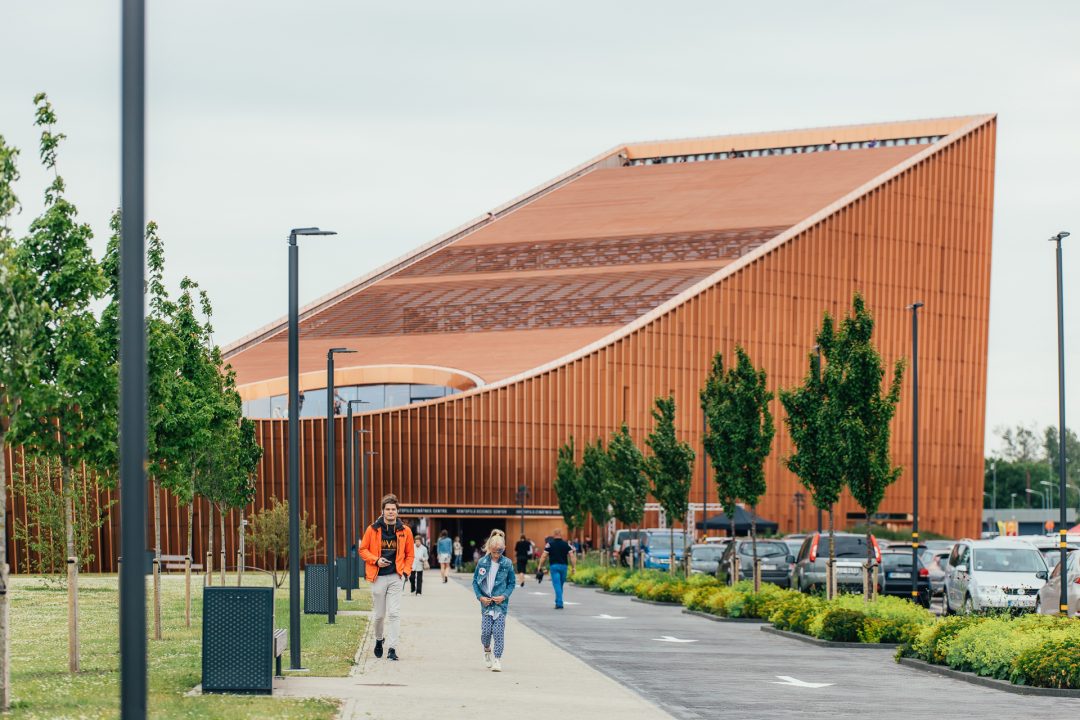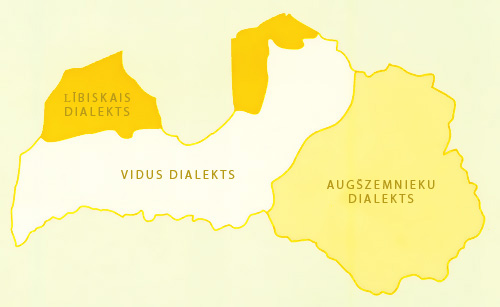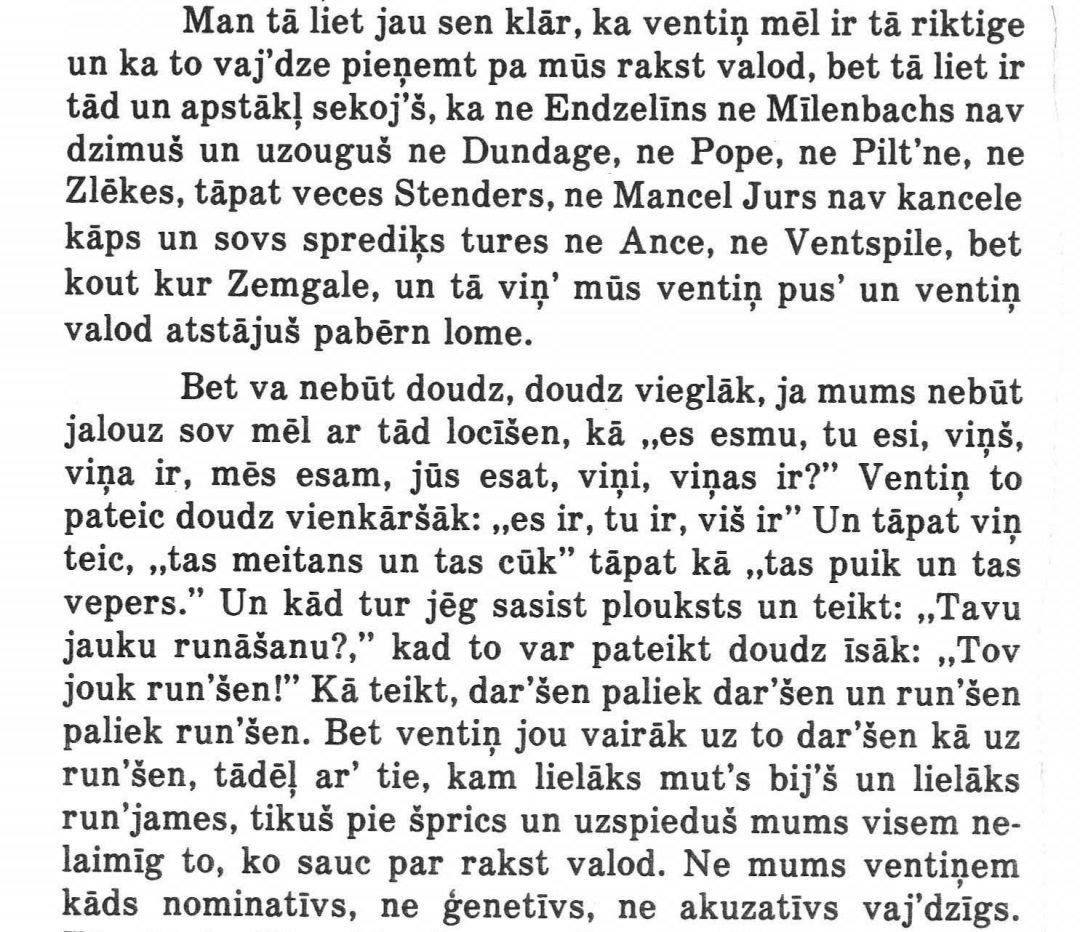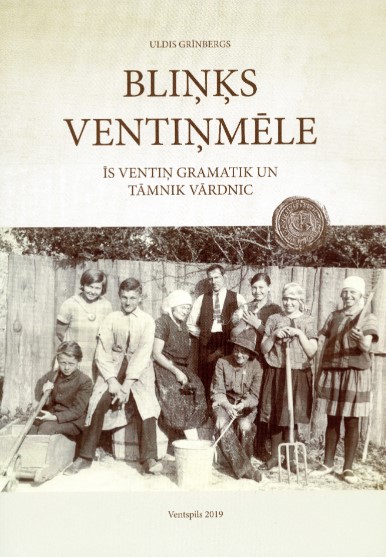Livonian dialect, locally called ‘VENTIŅMĒL’, is one of the three Latvian dialects.
In Latvian, there are three dialects (Middle dialect, Livonian dialect, and Upper Latvian dialect), which were formed on the basis of the languages (or dialects, as the case may be) spoken by ancient Latvian tribes – Curonians, Semigallians, Selonians, and Latgalians, and they combine 512 subdialects.
LIVONIAN DIALECT, FORMERLY ALSO CALLED TAMIAN DIALECT, is spoken in Kurzeme, to the north of Alsunga and Kuldīga, and in the western part of Vidzeme. The Livonian language has influenced this dialect more than any other Latvian dialect. There are two main groups of subdialects in the Livonian dialect: Livonian or TAMIAN subdialects of Kurzeme and Livonian subdialects of Vidzeme.
The Livonian dialect was named after Livonians who lived within these territories and later mixed with Latvians, more specifically, Curonians, which left the respective traces of Livonian in Latvian language.
The main characteristics under the influence of Livonian language, to be exact, the Finno-Ugric languages are as follows:
- No distinction between grammatical genders like in the Finno-Ugric languages.
- Shortening of affixes and final syllables.
One of the most typical characteristics of the deep Tamian subdialects due to the lack of feminine gender is the replacement of the feminine pronoun ‘viņa’ (she) with the masculine pronoun ‘viņš>vish’ (he).
The well-known Latvian dialectologist prof. Marta Rudzīte believes that “maybe the subdialects would survive longer in the natural environment if we changed our mindset and started considering them as the same cultural value as folk songs, folk costumes, etc.”
Available book – “Bliņķs Ventiņmēlē”. Author: Uldis Grīnbergs. Published in 2019. “Īs ventiņ gramatik un tāmnik vārdnic jeb bliņķs ventiņmēlē” is an engaging, by no means less scientific, handbook of ‘Ventiņi’ language for everyone willing to learn more about the diverse expressions of this energetic Latvian dialect. Author of the dictionary – philologist Uldis Grīnbergs; Publisher – Ventspils Museum; Publishing house – Jāņasēta. The book contains rich illustrations in form of photographs from the late 19th century and early 20th century, as well as textbook illustrations from the collection of Ventspils Museum.
(LU Latviešu valodas Institūts, “Latviešu valodas dialektu atlants Fonētika”. Riga: LU Latviešu valodas Institūts, 2013, p. 304; LU Latviešu valodas institūts, “Latviešu valodas dialektu atlants Morfoloģija I”. Riga: Zinātne, 2021, p. 288; LU Latviešu valodas institūts, “Avoti vēl neizsīkst. Latviešu valodas dialekti 21. gadsimtā”. Riga: LU Latviešu valodas institūts, 2016, p. 512Rudzīte, M. Darbi latviešu dialektoloģijā. Riga: LU, 2005; Rudzīte, M. Latviešu dialektoloģija. Riga: Latvijas Valsts izdevniecība, 1964; Rudzīte, M. Darbi latviešu dialektoloģijā. Riga: LU, 2005 ;LU Latviešu valodas institūts, “Avoti vēl neizsīkst. Latviešu valodas dialekti 21. gadsimtā”. Riga: LU Latviešu valodas institūts, 2016, p. 512 )





